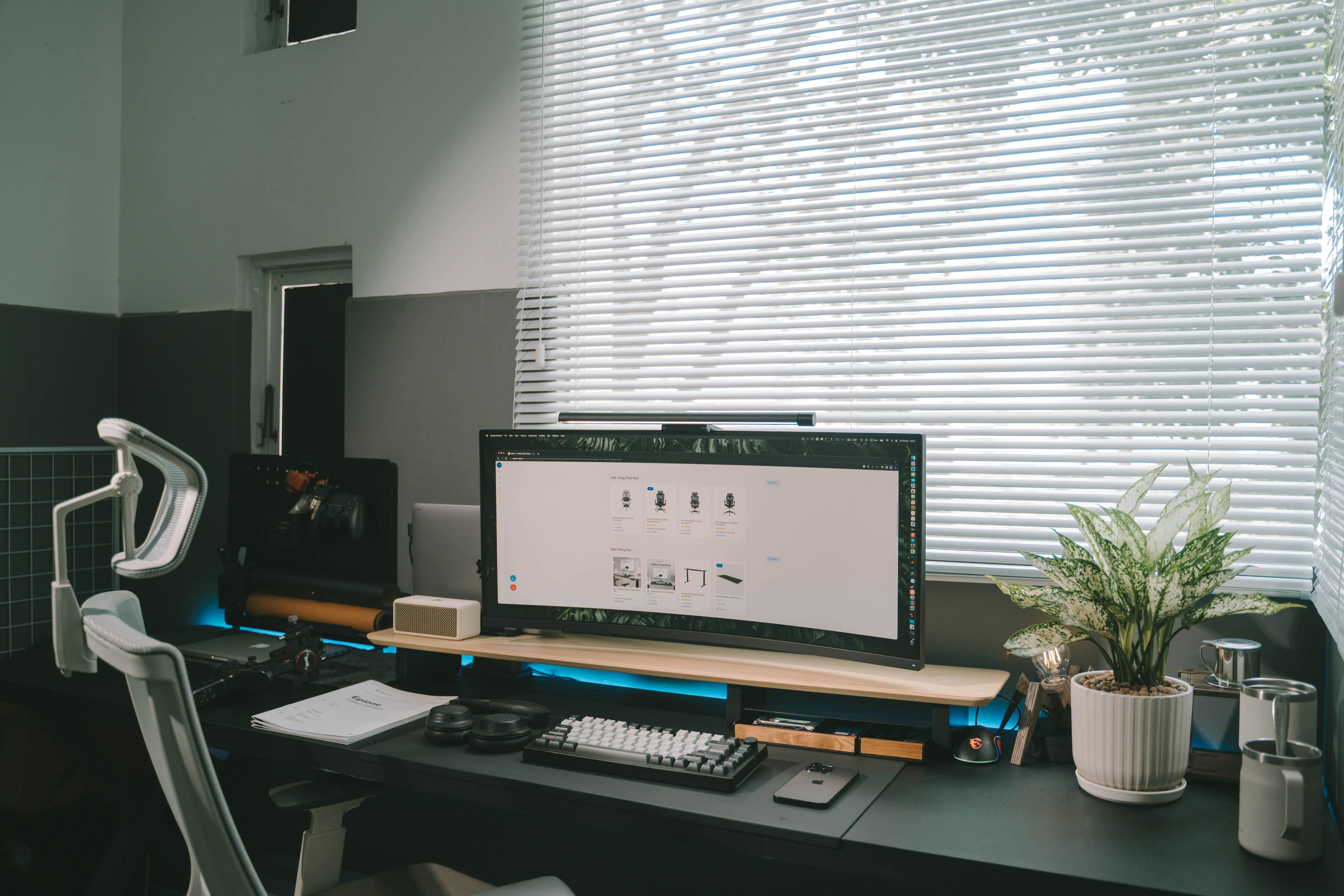Is your trusty computer feeling a bit sluggish lately? Don’t worry; we’ve got you covered! In this step-by-step guide, we will walk you through all the necessary troubleshooting techniques to help you breathe new life into your slow computer. From identifying potential issues to optimizing your system, we’ve got all the tips and tricks you need to get your computer up and running at lightning speed again. So, grab a cup of coffee and get ready to give your computer the boost it deserves!
Step 1: Check for Malware and Viruses
Is your computer running slower than usual? The first step to troubleshoot a slow computer is to check for malware and viruses. These malicious software can significantly impact the performance of your system. To start the process, ensure that your antivirus software is up to date. This is crucial as new threats arise regularly, and keeping your antivirus software updated allows it to detect and remove the latest malware and viruses.
Once your antivirus software is up to date, perform a full system scan. This comprehensive scan will search through all files and folders on your computer to identify any potential threats. It may take some time to complete, depending on the size of your hard drive and the number of files present. During the scan, your antivirus software will flag any detected malware or viruses.
If the scan identifies any threats, it is essential to remove them promptly. Follow the prompts provided by your antivirus software to get rid of these malicious programs. Removing malware and viruses can help improve the speed and overall performance of your computer.
Step 2: Free Up Disk Space
One common cause of a slow computer is having limited disk space available. When your hard drive nears its capacity, it can lead to decreased performance. To troubleshoot this issue, you should consider deleting unnecessary files and programs that take up space on your computer.
Start by going through your files and deciding which ones are no longer needed. Delete any old documents, unused applications, or other files that are taking up valuable disk space. You can also utilize the Disk Cleanup Tool, which helps you identify and remove temporary files and other unnecessary items.
In addition to removing files, you can optimize disk space usage by utilizing storage optimization features available in your operating system. These features allow you to compress files or move them to external storage devices, freeing up space on your computer’s hard drive.
By freeing up disk space, you provide your computer with more room to operate efficiently, ultimately improving its speed and performance.
Step 3: Manage Startup Programs
When you start your computer, do you find that it takes a long time to fully boot up? This could be due to unnecessary programs that launch automatically during startup. Managing startup programs is a crucial step in troubleshooting a slow computer.
Take a moment to assess which programs are launching at startup and determine if they are necessary. Often, you’ll find that some programs run in the background unnecessarily, consuming valuable system resources. To stop these programs from launching at startup, you’ll need to access the settings or preferences within each specific program.
Another method to manage startup programs is by using the Task Manager. This built-in utility in Windows allows you to view and disable programs that launch during startup. By disabling unnecessary programs, you can reduce the startup time of your computer and improve its overall speed.
Step 4: Update Your Operating System and Drivers
Regularly updating your operating system and drivers is essential for maintaining a fast and efficient computer. Operating system updates often include bug fixes, security patches, and performance improvements that can significantly impact your system’s speed.
To check for available operating system updates, open the settings menu on your computer and navigate to the “Updates” or “System Updates” section. Here, you’ll find an option to check for updates and install any that are available. It is vital to keep your operating system up to date to ensure you have the latest features and improvements.
Drivers are software programs that allow your computer to communicate with and control hardware devices such as printers, graphics cards, or sound cards. Updating these drivers can enhance the performance of the corresponding hardware components and contribute to the overall speed of your computer. You can check for driver updates on the manufacturer’s website or utilize software tools specifically designed for driver updates.
By regularly updating your operating system and drivers, you ensure that your computer benefits from the latest enhancements, maximizing its speed and performance.

This image is property of images.pexels.com.
Step 5: Optimize Performance Settings
Adjusting performance settings can have a significant impact on your computer’s speed and responsiveness. By fine-tuning these settings, you can optimize your computer for better performance.
Start by adjusting the power settings on your computer. Power settings dictate how your system utilizes energy and can impact its performance. You can modify these settings to prioritize performance over energy saving, which can help improve the speed of your computer.
Another performance setting to consider is disabling visual effects. While these effects may enhance the aesthetic appearance of your computer, they can also consume valuable system resources. Disabling or reducing these visual effects can free up resources, resulting in a snappier and more responsive computer.
Additionally, you can disable background processes and services that are not necessary for everyday use. Many applications run background services that can consume system resources and slow down your computer. By disabling these unnecessary processes, you can allocate more resources to the applications and tasks that you actively use, resulting in improved performance.
By optimizing performance settings, you can tailor your computer to prioritize speed and responsiveness, making your computing experience smoother and more enjoyable.
Also Check: How To Transfer Files From PC To Mobile Wirelessly
Step 6: Upgrade Hardware Components
If you have followed the previous steps and are still experiencing sluggish performance, it may be time to consider upgrading your hardware components. Upgrading key components can provide a significant boost to your computer’s speed and overall performance.
Start by assessing your hardware requirements. Identify the specific areas where your computer lacks the necessary resources to meet your needs. For example, if you frequently run memory-intensive programs or multitask extensively, upgrading your RAM (Random Access Memory) can provide a substantial performance boost.
Another hardware component to consider upgrading is your storage drive. Traditional hard drives can be a significant bottleneck for performance, especially if you’re dealing with large files or running resource-intensive applications. Switching to a solid-state drive (SSD) can result in significantly faster read and write speeds, enhancing the overall speed of your computer.
Depending on your needs and budget, you may also want to consider upgrading your graphics card or processor. These components play a crucial role in tasks such as gaming, video editing, or running complex software. Upgrading these components can improve the speed and performance of applications that heavily rely on graphics or processing power.
By upgrading hardware components, you provide your computer with the resources necessary to handle demanding tasks, resulting in a faster and more efficient system.

This image is property of images.pexels.com.
Step 7: Perform Disk Defragmentation
Over time, files on your computer’s hard drive can become fragmented, meaning they are stored in non-contiguous clusters. This fragmentation can slow down read and write speeds, impacting the overall performance of your computer. Performing disk defragmentation is a process that rearranges files to occupy contiguous clusters, improving data retrieval and storage efficiency.
To run disk defragmentation, you can utilize the built-in Disk Cleanup and Disk Defragmenter tools available in Windows. These tools will analyze your hard drive and optimize its layout by defragmenting fragmented files. It is recommended to run these utilities regularly to maintain optimal performance.
By performing disk defragmentation, you can enhance data access speeds and improve the overall efficiency of your computer’s hard drive.
Step 8: Check for Excessive Browser Extensions
If you primarily use your computer for web browsing and find that your browser is running slow, excessive browser extensions could be the culprit. While extensions can provide additional functionality, having too many installed can slow down your browsing experience.
Take a moment to review the browser extensions you currently have installed and disable or remove any unnecessary ones. These extensions can consume system resources and impact the speed of web page loading.
By streamlining your browser extensions, you can enjoy faster browsing and improved overall performance.
Step 9: Clean Up Registry Entries
The Windows Registry is a database that stores settings and configurations for various software and hardware on your computer. Over time, invalid or unnecessary entries can accumulate in the registry, potentially impacting system performance. Cleaning up these registry entries is an optional step but can help troubleshoot a slow computer.
To clean up registry entries, you can use a reliable and trusted registry cleaner tool. These tools scan and identify invalid or redundant entries in the registry and allow you to fix or remove them. It is essential to exercise caution when editing the registry, as incorrect changes can cause system instability.
By cleaning up registry entries, you can improve the efficiency of your computer’s registry and potentially see a boost in overall system performance.
Conclusion
A slow computer can be frustrating, but with the right troubleshooting steps, you can improve its speed and performance. Start by checking for malware and viruses, freeing up disk space, and managing startup programs. Update your operating system and drivers regularly and optimize performance settings. If necessary, consider upgrading hardware components and perform disk defragmentation. Check for excessive browser extensions and clean up registry entries for additional improvements.
By following these steps, you can enjoy a faster and more efficient computer, enhancing your productivity and overall computing experience. Don’t let a slow computer hold you back; take action today and reap the benefits of a snappy and responsive system!


